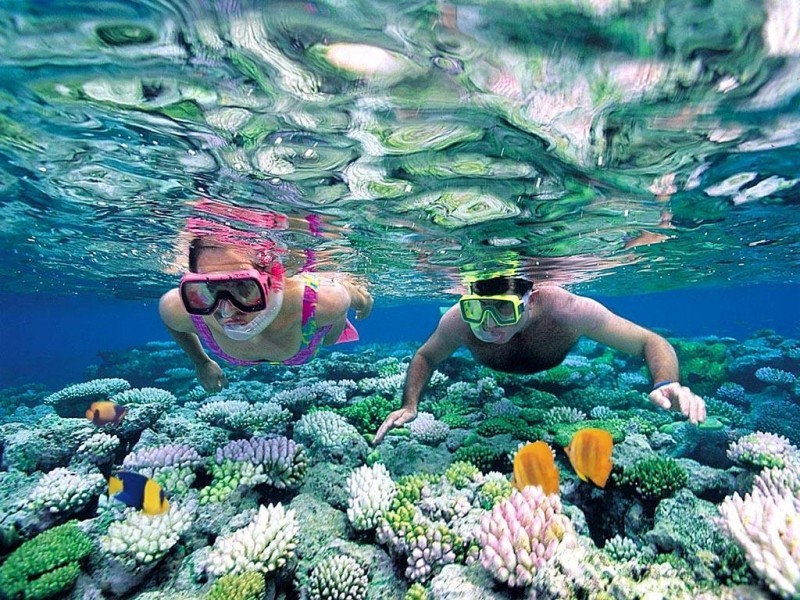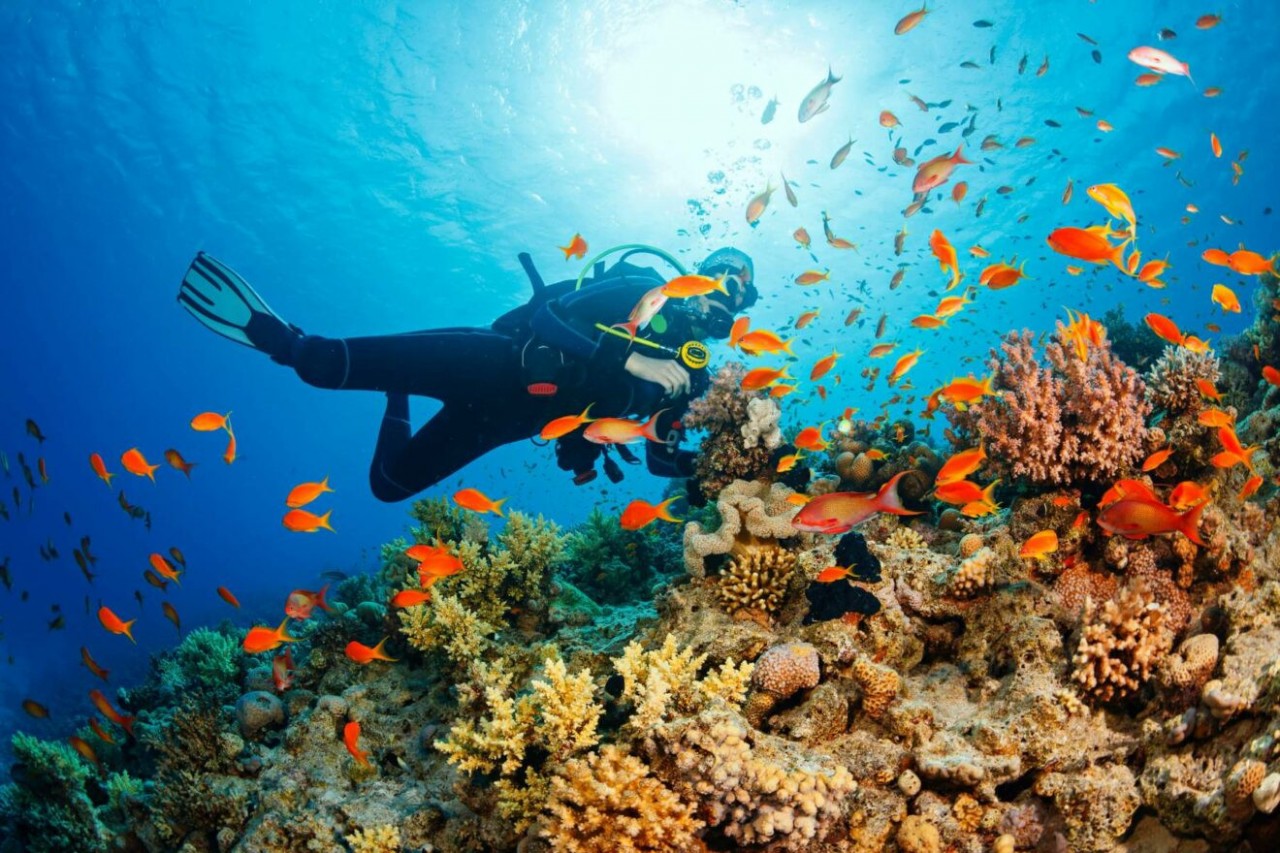Vietnamese Man Scuba Dives To Find Shipwrecks in Philippines
In May 2023, Thai Khang, who is deeply passionate about scuba diving, spent 15 days in the Philippines. During his time here, he went to Coron, the third largest island in the Calamian archipelago in northern Palawan, Philippines.
“I chose to dive in Coron because I heard about Japanese warship wrecks that were attacked by the US in 1944, during World War II. These wrecks have been deep under the sea for 79 years,” he said.
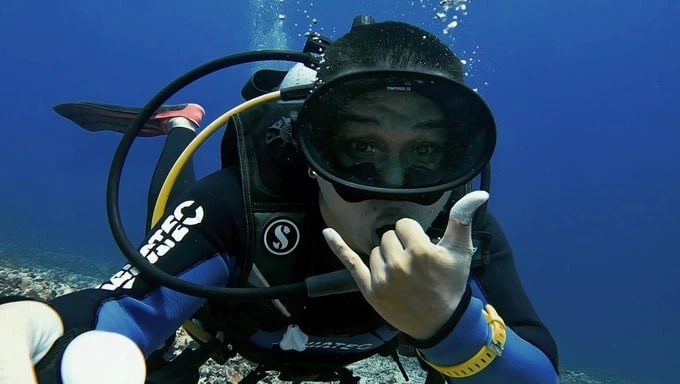 |
| Thai Khang with his passion for diving. Photo: Thai Khang |
Coron has a bay area, including rocky mountains, which are mostly limestones. To participate in diving, visitors are required to have an Open Water Diver (basic) certificate or higher. As for Khang, he has a diving certificate in Advanced Open Water and Wreck Speciality (specialized for diving to see shipwrecks).
According to the map, there are a total of 10 wrecks lying deep in the ocean. However, he only selected 8 wrecks because ships 9 and 10 were located quite far away. Throughout the dive, participants must follow technical instructions to ensure safety.
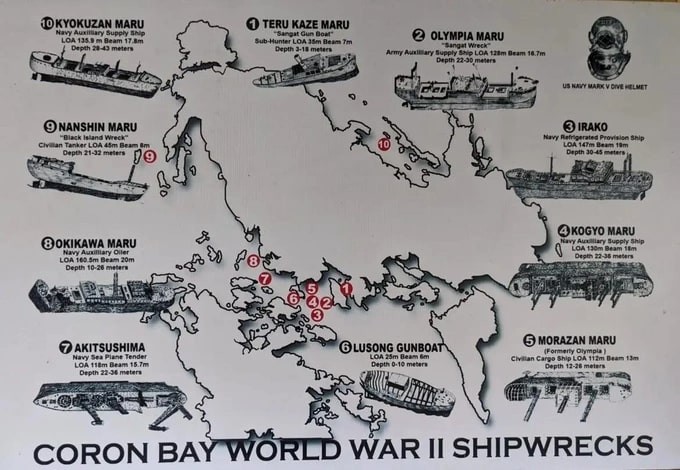 |
| Map of the shipwreck in Coron, Philippines. Photo: Thai Khang |
Around 8 a.m., Khang gathers at the Dive Center to move to the seaport and the diving site. Each dive has a duration of 45-60 minutes. The maximum allowed diving depth is 40m. However, the wreck is usually only about 20-30m. Of the 8 ships that Khang visited, there were 2 small shallow ships and 6 large warships, with a length of 100m-160m.
"It looked like something from a science fiction movie," said the diver.
During 79 years of lying in the ocean, the shipwreck has merged with mother nature. The corals grow it strongly and densely multiply in every corner.
 |
| The beautiful coral in the ocean was taken by Thai Khang. Photo: Thai Khang |
The condition of the ships was intact, allowing the Vietnamese scuba diver to swim through each room, looking at the parts and machinery.
Among them, Thai Khang was most impressed with Kogyo Maru, a ship built in Osaka, Japan. It was destroyed at dawn on September 24, 1944, near the end of World War II. This is one of the largest shipwrecks in Coron Bay, once carrying materials for building runways.
As the years passed, the ship was almost covered by plankton and coral. Under the dark seabed, light rays pass through the cracks in the hull of the ship, making the scenery like a mysterious and ruined world.
Thai Khang said that during the journey to discover the wreck of the submersible, he had to follow the guide closely because the compartments were very dark, with many niches and passages, so it was easy to get lost. He also regularly has to check his wearable device to monitor safety parameters during diving, to avoid exceeding the allowable bottom time.
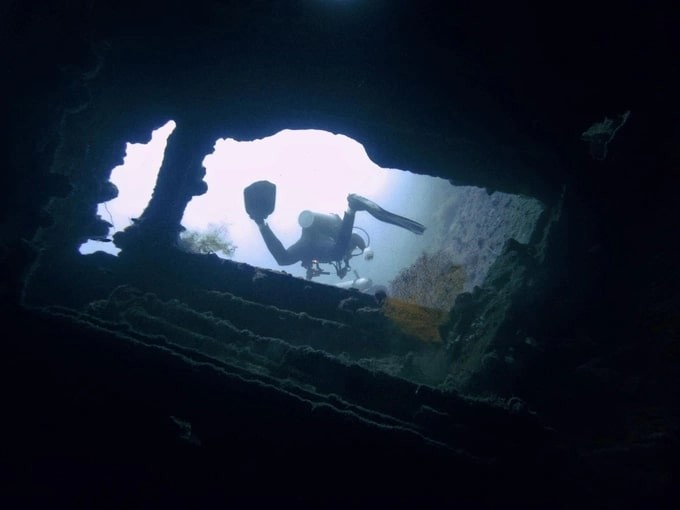 |
| Photo: Thai Khang |
According to Khang, Asia currently has many shipwreck diving sites such as in Indonesia, Thailand, or Malaysia. However, Coron Island is almost the only area where many ships are the largest and biggest in the ocean. allowing visitors to crawl inside to explore. Besides, these wrecks are also located at a moderate depth, less than 40m.
During the trip, Khang was particularly impressed with the cleanliness at Coron. "From the town, the seaport to the diving spot, I hardly see any trash. People also only sell basic seafood such as shrimp and squid. They have built a sustainable tourism model," he added.
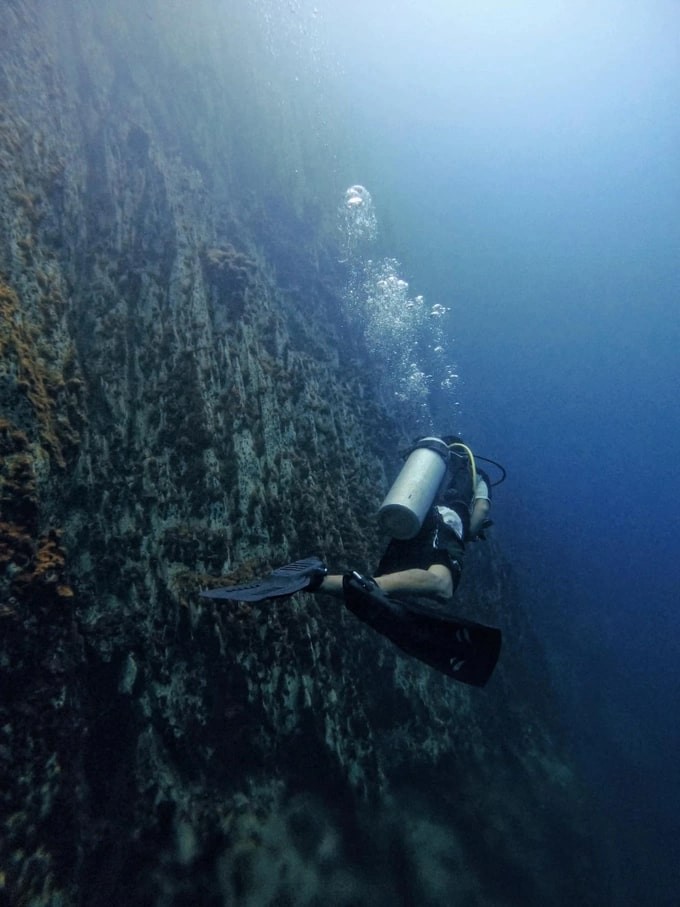 |
| Photo: Thai Khang |
Thai Khang also experienced diving in Panglao, in the province of Bohol, Philippines. The cost of diving for both places is 15 million VND (US$633.25). He also lost about 5.5 million VND (US$232.19) for air tickets and 7.2 million (US$304.16) VND for accommodation and meals.
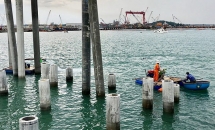 | Dung Quat ancient shipwreck excavated The excavation of an ancient shipwreck discovered in Binh Son district, in the central coastal province of Quang Ngai, began on July 9. |
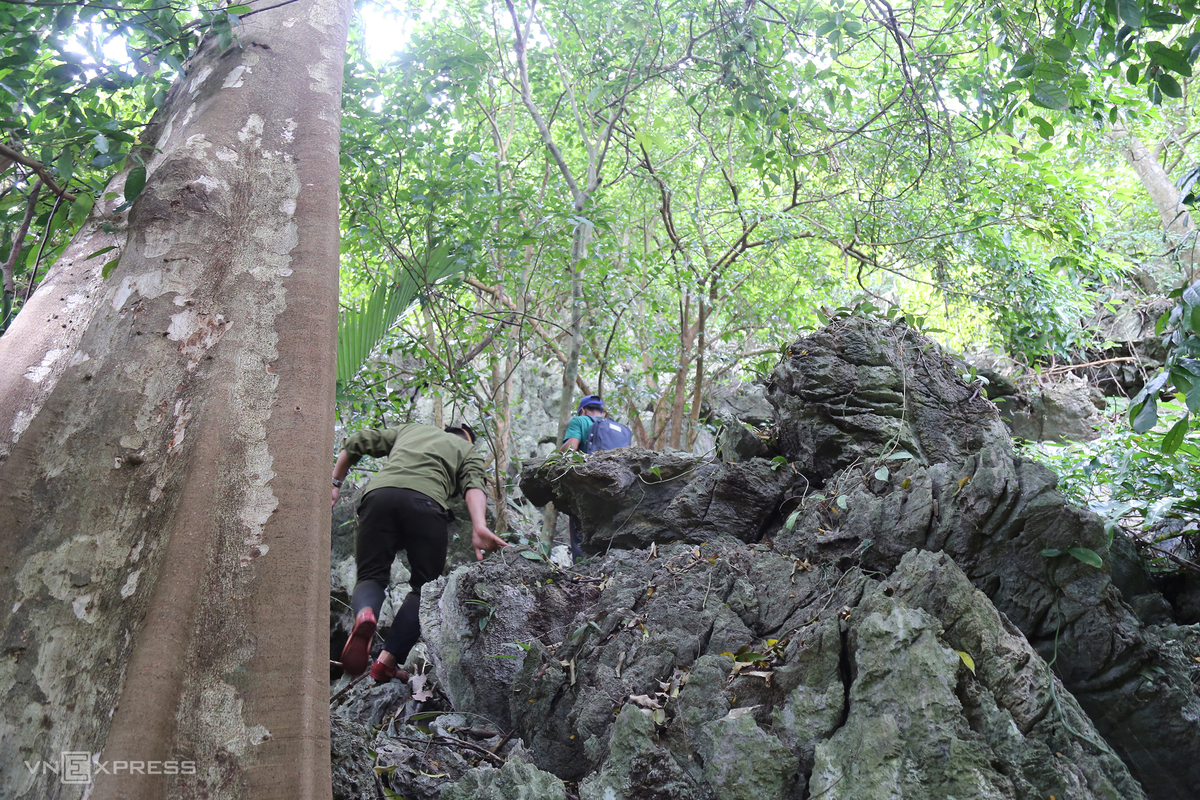 | Hidden stream found in Quang Tri Cave An underground stream yet to be fully explored found in the new cave in Huong Son Commune of Quang Tri Province. |
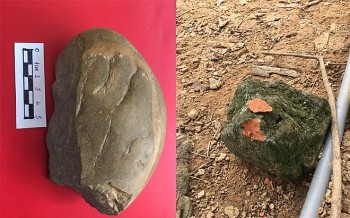 | New Prehistoric Archaeological Site Discovered in Yen Bai Experts from the museum of northern Yen Bai province have found a cultural relic site belonging to the Late Stone Age (pre-Hoa Binh Culture period) ... |
Recommended
 Handbook
Handbook
Vietnam Moves Up 8 Places In World Happiness Index
 Handbook
Handbook
Travelling Vietnam Through French Artist's Children Book
 Multimedia
Multimedia
Vietnamese Turmeric Fish among Best Asian Dishes: TasteAtlas
 Handbook
Handbook
From Lost to Found: German Tourist Thanks Vietnamese Police for Returning His Bag
Popular article
 Handbook
Handbook
Prediction and Resolution for the Disasters of Humanity
 Handbook
Handbook
16 French Films To Be Shown For Free During Tet Holiday In Vietnam
 Handbook
Handbook
Unique Cultural and Religious Activities to Welcome Year of the Snake
 Handbook
Handbook





